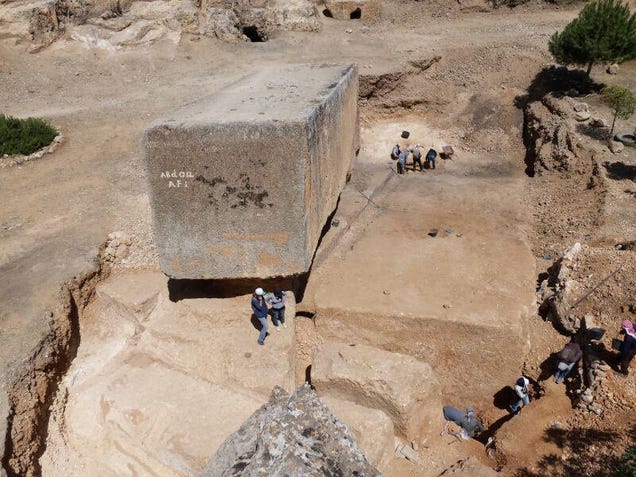Amazing news from Yahoo.but this information is old to me,maybe news for some fox here
EXPAND
See that absurdly massive stone block? Yeah, that's not the one we're talking about. Look over to the right. German archaeologists working at the Baalbek site in Lebanon have uncovered the largest known ancient block.
The fully exposed block, which dates back to around 27 B.C., is the well known Hajjar al-Hibla. It's located in a stone quarry at Baalbek, site of the ancient Heliopolis in Lebanon. Similar stone blocks measuring up to 20 meters (65 feet) in length and a diameter of 4 x 4 meters (13 x 13 feet) were used for the podium of the massive Temple of Jupiter in the Roman sanctuary of Baalbek.
A few months ago, a team from the German Archaeological Institute conducted excavations at the quarry, and to their amazement they found an ever bigger stone just off to the side and underneath it. It measures 19.6 meters (64 feet) in length, 6 meters (19.6 feet) wide, and is at least 5.5 meters (18 feet) high. Its weight is estimated at a daunting 1,650 tons (that's 3,300,000 pounds, or 1,496,850 kg). Future excavations will confirm its precise dimensions.
The archaeologists concluded that because of the stone's configuration and level of smoothness, the block was meant to be transported without being cut. It's thus the biggest stone block known from antiquity. They're now investigating why the stone was not completed and remained in the quarry — and by what means the Roman builders had to transport it
retrieved from
http://io9.com/archaeologists-discover-the-worlds-largest-ancient-ston-1664281050


No comments:
Post a Comment